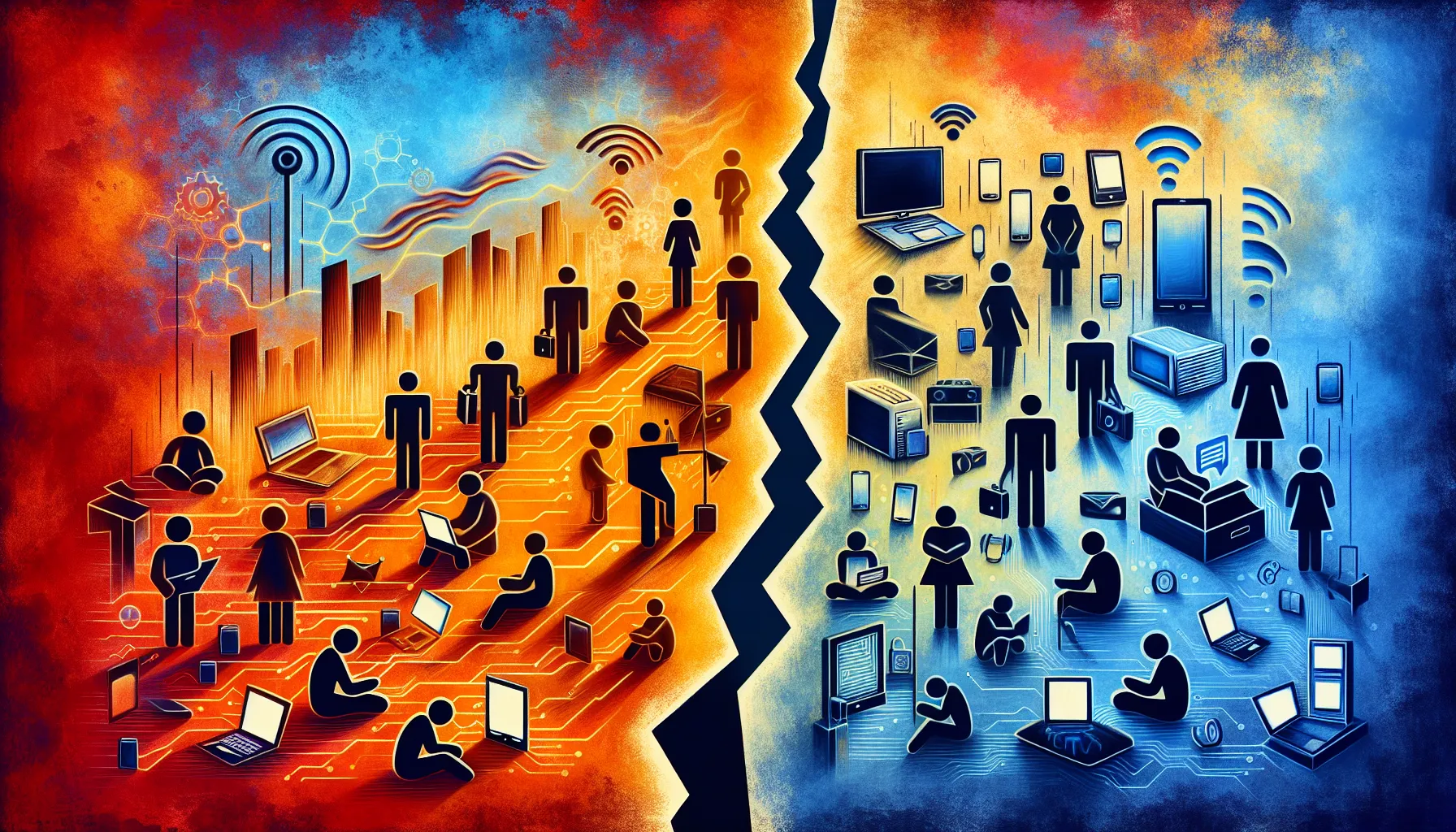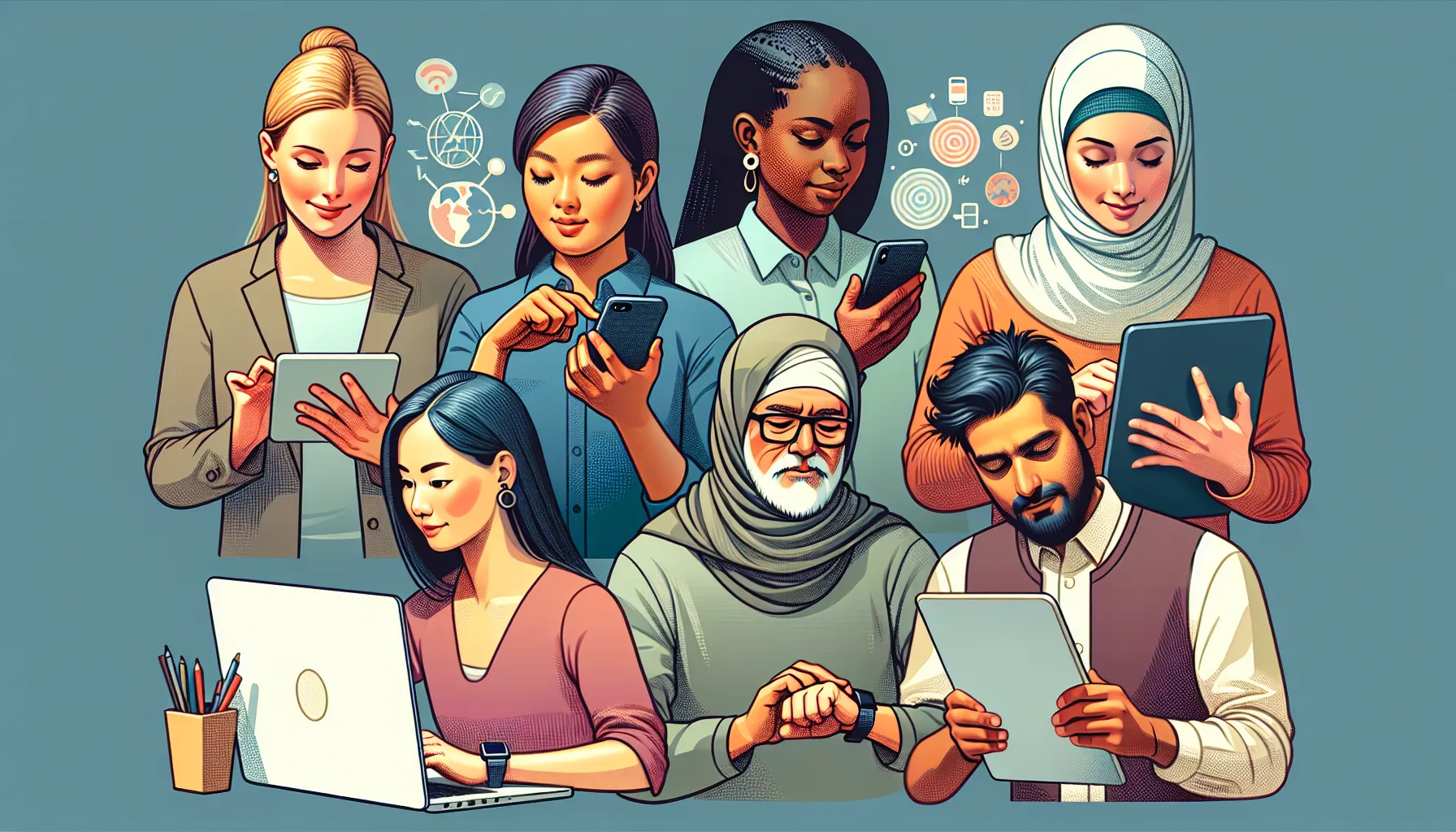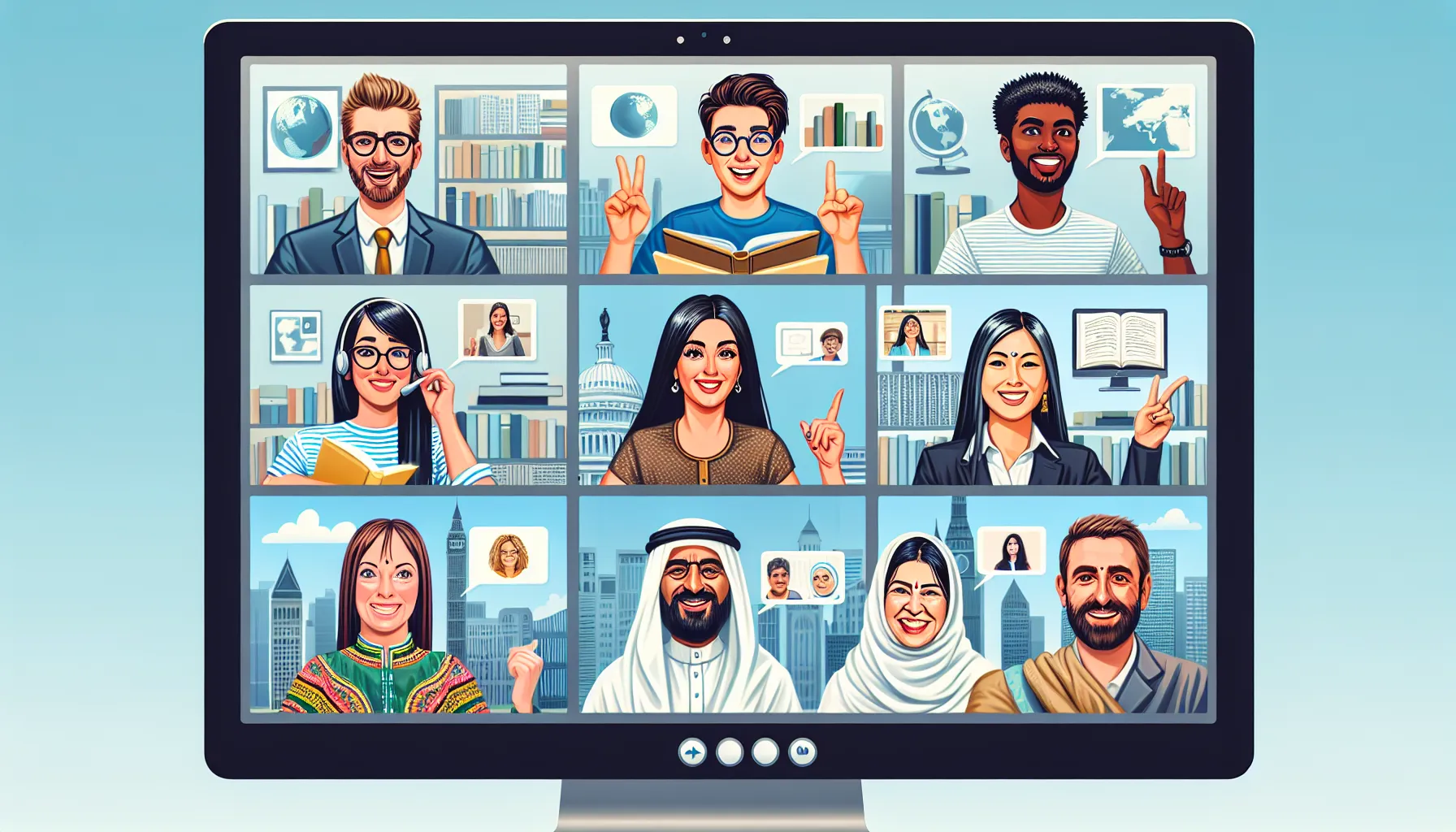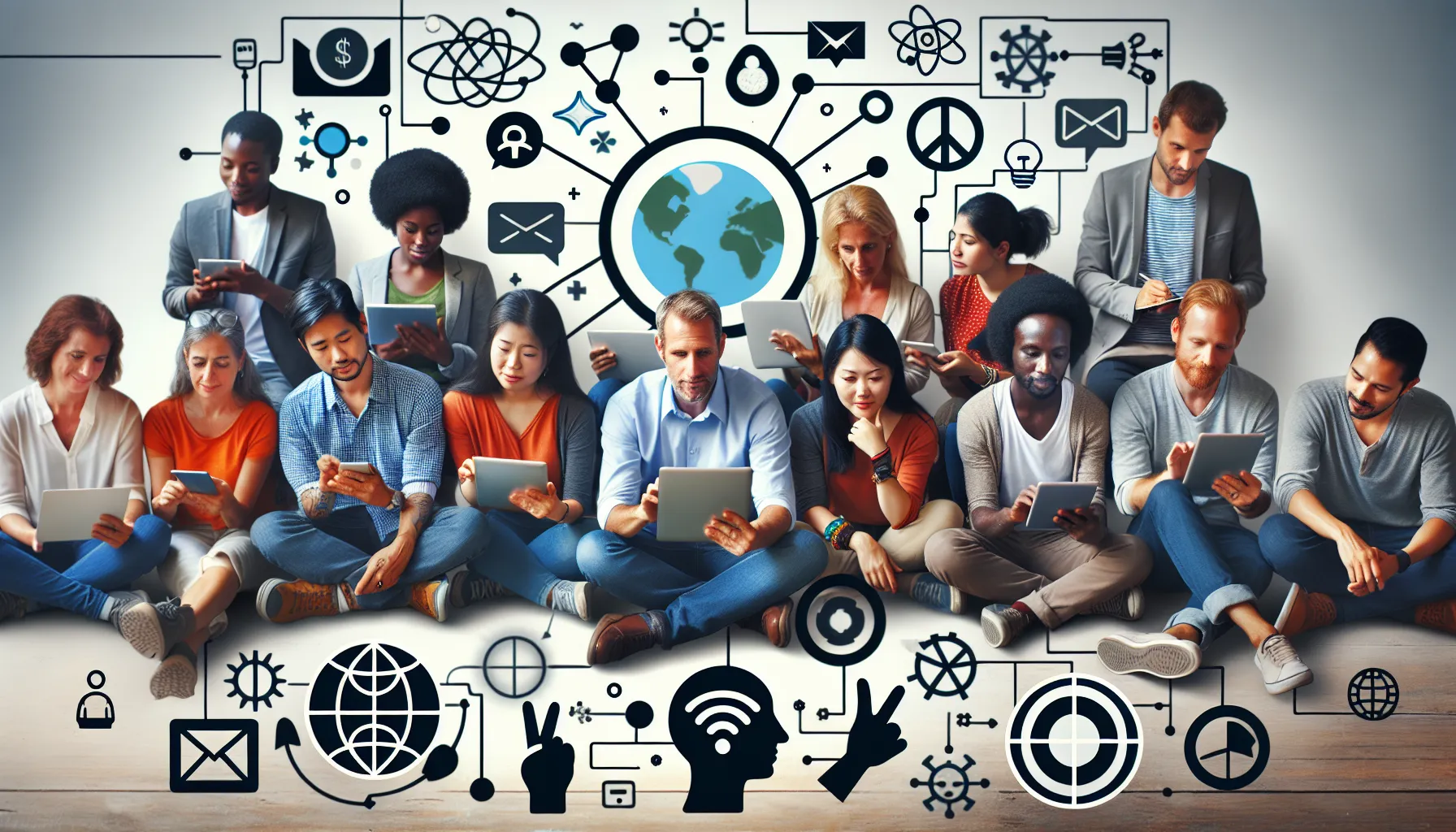Welcome to this IELTS Reading practice test focusing on the topic “How digital literacy programs address cultural barriers”. As an experienced IELTS instructor, I’ve designed this test to closely mirror the actual IELTS Reading exam, providing you with valuable practice and insights into this important subject. Let’s dive into the passages and questions that will challenge your reading comprehension skills while exploring the intersection of digital literacy and cultural diversity.
Nội dung bài viết
- Passage 1 (Easy Text)
- Digital Literacy: Bridging Cultural Divides
- Questions 1-5
- Questions 6-10
- Passage 2 (Medium Text)
- Overcoming Digital Divides: Cultural Considerations in Global Literacy Programs
- Questions 11-15
- Questions 16-20
- Passage 3 (Hard Text)
- Digital Literacy as a Catalyst for Cultural Transformation
- Questions 21-26
- Questions 27-30
- Answer Key
- Passage 1
- Passage 2
- Passage 3
- Conclusion
Passage 1 (Easy Text)
Digital Literacy: Bridging Cultural Divides
In today’s interconnected world, digital literacy has become an essential skill for people of all backgrounds. However, cultural barriers often pose significant challenges to the widespread adoption of digital technologies. Digital literacy programs are increasingly being designed to address these cultural hurdles, fostering inclusivity and enabling diverse populations to participate fully in the digital age.
One way digital literacy initiatives tackle cultural barriers is through culturally responsive content. By incorporating materials that reflect the experiences, values, and traditions of various cultural groups, these programs make digital learning more relatable and engaging for participants from different backgrounds. This approach helps mitigate the sense of alienation that some individuals may feel when confronted with unfamiliar technology.
 Digital literacy program participants
Digital literacy program participants
Language is another crucial factor in addressing cultural barriers. Many digital literacy programs now offer multilingual interfaces and learning materials, allowing participants to engage with digital tools in their native languages. This not only facilitates better understanding but also demonstrates respect for linguistic diversity, encouraging more people to embrace digital skills.
Furthermore, digital literacy programs are increasingly employing local facilitators who understand the specific cultural contexts of their communities. These facilitators can bridge the gap between technological concepts and local customs, making the learning process more accessible and culturally appropriate. By doing so, they help build trust and alleviate concerns about the impact of digital technologies on traditional ways of life.
As digital literacy programs continue to evolve, they are playing a vital role in breaking down cultural barriers and creating a more inclusive digital society. By addressing the unique needs and perspectives of diverse populations, these initiatives are helping to ensure that the benefits of the digital age are accessible to all, regardless of cultural background.
Questions 1-5
Do the following statements agree with the information given in the passage?
Write:
TRUE if the statement agrees with the information
FALSE if the statement contradicts the information
NOT GIVEN if there is no information on this
- Digital literacy is considered an important skill in today’s world.
- Cultural barriers are the only obstacles to digital technology adoption.
- Culturally responsive content helps make digital learning more relevant to diverse participants.
- Digital literacy programs are available in all languages.
- Local facilitators can help explain digital concepts in a culturally appropriate manner.
Questions 6-10
Complete the sentences below.
Choose NO MORE THAN TWO WORDS from the passage for each answer.
- Digital literacy programs aim to create __ in the digital age.
- Multilingual interfaces show respect for __ diversity.
- Local facilitators help to build __ within their communities.
- Digital literacy initiatives address concerns about technology’s impact on __ ways of life.
- These programs strive to make digital benefits accessible regardless of __ background.
Passage 2 (Medium Text)
Overcoming Digital Divides: Cultural Considerations in Global Literacy Programs
The rapid proliferation of digital technologies has transformed the global landscape, offering unprecedented opportunities for communication, education, and economic advancement. However, this digital revolution has also exacerbated existing inequalities, creating a stark divide between those who have access to and can effectively use digital tools and those who cannot. This “digital divide” is not merely a matter of technological infrastructure; it is deeply intertwined with cultural, social, and economic factors that vary significantly across different regions and communities.
Digital literacy programs have emerged as a critical intervention to bridge this divide, but their success hinges on their ability to address the complex cultural barriers that often impede technology adoption and utilization. These programs must navigate a delicate balance between introducing universal digital skills and respecting the diverse cultural contexts in which they operate.
One of the primary challenges faced by global digital literacy initiatives is the ethnocentric bias inherent in many technological systems. The majority of digital platforms and tools are developed in Western countries, often reflecting Western values, communication styles, and ways of organizing information. This can create a significant disconnect for users from non-Western cultures, who may find these systems counterintuitive or at odds with their cultural norms.
To address this issue, many successful digital literacy programs have adopted a culturally adaptive approach. This involves tailoring content, interfaces, and teaching methodologies to align with local cultural values and practices. For instance, in collectivist societies where group harmony is prioritized, digital literacy curricula might emphasize collaborative online tools and social media etiquette. Conversely, in more individualistic cultures, the focus might be on personal productivity apps and individual online branding.
Another crucial aspect of culturally sensitive digital literacy programs is the recognition of indigenous knowledge systems. Traditional knowledge and local wisdom, often passed down through oral traditions, can be at risk of being marginalized in the digital age. Forward-thinking digital literacy initiatives are finding ways to integrate these knowledge systems into digital platforms, creating hybrid spaces where traditional and modern ways of knowing can coexist and enrich each other.
The role of gender in digital literacy cannot be overlooked, especially in societies with significant gender disparities. Many cultures have deeply ingrained gender norms that can limit women’s access to technology and education. Effective digital literacy programs must actively work to overcome these barriers, often by creating safe, women-only learning environments, addressing family and community concerns, and highlighting the potential benefits of digital skills for household management and childcare.
Language diversity presents another significant challenge. While English dominates much of the digital landscape, millions of potential users speak only local or indigenous languages. Multilingual digital literacy programs are essential for reaching these populations. This goes beyond mere translation; it involves creating culturally relevant content in local languages and supporting the development of digital tools that can accommodate diverse scripts and linguistic structures.
As digital technologies continue to evolve at a rapid pace, digital literacy programs must also grapple with the challenge of technological leapfrogging. In many developing regions, communities are transitioning directly from minimal technology use to smartphones and mobile internet, skipping the era of personal computers. This presents both opportunities and challenges for digital literacy education, requiring programs to be flexible and forward-thinking in their approach.
The success of digital literacy programs in addressing cultural barriers ultimately depends on their ability to foster a sense of digital citizenship that transcends cultural boundaries while respecting local values. By empowering individuals to become active, responsible participants in the global digital community, these programs can help bridge divides and create a more inclusive digital future for all.
Questions 11-15
Choose the correct letter, A, B, C, or D.
-
According to the passage, the digital divide is:
A) Solely a result of lack of technological infrastructure
B) Only affecting developing countries
C) Influenced by cultural, social, and economic factors
D) Easy to overcome with basic education -
The ethnocentric bias in technological systems refers to:
A) The preference for Western users
B) The reflection of Western values and communication styles
C) The exclusion of non-Western users
D) The superiority of Western technology -
Culturally adaptive digital literacy programs:
A) Ignore local cultural values
B) Only focus on Western teaching methods
C) Tailor content to align with local cultural norms
D) Promote one universal approach to digital learning -
The passage suggests that indigenous knowledge systems:
A) Are irrelevant in the digital age
B) Should be completely replaced by modern digital knowledge
C) Can be integrated into digital platforms
D) Are superior to digital knowledge systems -
The concept of technological leapfrogging in the context of digital literacy refers to:
A) Communities skipping stages of technological adoption
B) The rapid obsolescence of digital devices
C) The superiority of newer technologies
D) The need for constant technological upgrades
Questions 16-20
Complete the summary below.
Choose NO MORE THAN TWO WORDS from the passage for each answer.
Digital literacy programs face numerous challenges in addressing cultural barriers. One major issue is the (16) __ bias found in many technological systems, which can alienate users from non-Western cultures. Successful programs often adopt a (17) __ approach, tailoring content to local values. They also work to integrate (18) __ systems, ensuring traditional knowledge is not lost. Gender disparities are addressed by creating safe learning environments and highlighting technology’s benefits for (19) __. Language diversity is tackled through multilingual programs and culturally relevant content. Ultimately, these programs aim to foster a sense of (20) __ that respects local values while connecting users to the global digital community.
Passage 3 (Hard Text)
Digital Literacy as a Catalyst for Cultural Transformation
The advent of the digital age has ushered in an era of unprecedented global connectivity, fundamentally altering the ways in which individuals and communities interact, learn, and participate in the broader societal discourse. Within this context, digital literacy has emerged not merely as a set of technical skills, but as a transformative force capable of reshaping cultural landscapes and bridging long-standing divides. As digital literacy programs proliferate across diverse global contexts, they are increasingly recognized as powerful tools for addressing deeply entrenched cultural barriers, fostering cross-cultural understanding, and catalyzing social change.
At the heart of this transformative potential lies the capacity of digital literacy to democratize access to information and platforms for expression. In societies where traditional power structures have long controlled the flow of information and the parameters of public discourse, digital technologies offer alternative channels for marginalized voices to be heard. Digital literacy programs, when thoughtfully implemented, can equip individuals with the skills to navigate these digital spaces effectively, thereby empowering them to challenge cultural narratives that may have previously gone unquestioned.
 Digital divide concept
Digital divide concept
However, the relationship between digital literacy and cultural transformation is far from straightforward. The very act of introducing digital technologies and associated literacies into a community can be disruptive to established cultural norms and practices. This disruption can manifest in various ways, from generational conflicts as younger, more digitally adept members of society challenge traditional authority structures, to the erosion of local languages and customs in the face of globalized digital culture.
Recognizing these complexities, forward-thinking digital literacy initiatives are adopting a nuanced, culturally sensitive approach that seeks to harness the transformative power of digital technologies while respecting and preserving cultural integrity. This approach often involves a process of co-creation, where program developers work closely with community members to design curricula and methodologies that align with local values and aspirations.
One exemplary model of this approach can be found in the indigenous digital storytelling programs that have emerged in various parts of the world. These initiatives leverage digital tools to preserve and revitalize oral traditions, creating multimedia archives of cultural knowledge that can be shared both within the community and with wider audiences. By doing so, they demonstrate how digital literacy can serve as a bridge between traditional and modern ways of knowing, rather than as a force for cultural erosion.
The potential for digital literacy to foster intercultural dialogue and understanding is another key aspect of its transformative power. In an increasingly interconnected world, the ability to engage respectfully and productively with diverse perspectives is crucial. Digital literacy programs that incorporate elements of global citizenship education can equip learners with the skills to navigate cross-cultural interactions in online spaces, promoting empathy and reducing cultural misunderstandings.
Moreover, digital literacy is playing a crucial role in economic empowerment across cultural boundaries. In many traditional societies, cultural norms have historically limited certain groups’ participation in economic activities. Digital literacy programs that focus on entrepreneurship and e-commerce skills are enabling individuals, particularly women and minority groups, to overcome these barriers and access new economic opportunities. This economic empowerment can, in turn, lead to shifts in cultural attitudes towards gender roles and social mobility.
The ethical dimensions of digital literacy in a culturally diverse world cannot be overlooked. As digital technologies become more pervasive, questions of data privacy, online safety, and digital rights take on cultural nuances that vary significantly across different contexts. Comprehensive digital literacy programs must address these ethical considerations, helping learners to navigate the complex terrain of digital citizenship in a way that respects both universal principles and local cultural values.
Looking to the future, the evolving landscape of artificial intelligence and machine learning presents both opportunities and challenges for cultural inclusivity in the digital realm. There is a growing recognition of the need for culturally intelligent AI systems that can understand and respond appropriately to diverse cultural contexts. Digital literacy programs will play a crucial role in preparing individuals to engage critically with these technologies, ensuring that AI development does not perpetuate cultural biases but instead contributes to a more inclusive digital ecosystem.
In conclusion, as digital literacy programs continue to address cultural barriers, they are simultaneously shaping the cultural landscapes within which they operate. The most effective initiatives recognize this dual role, approaching digital literacy not as a neutral set of skills, but as a powerful tool for cultural dialogue, empowerment, and transformation. By fostering digital literacy in a culturally sensitive manner, these programs are contributing to the emergence of a global digital culture that celebrates diversity while promoting shared understanding and collaboration across cultural boundaries.
Questions 21-26
Choose the correct letter, A, B, C, or D.
-
According to the passage, digital literacy is viewed as:
A) Primarily a set of technical skills
B) A force capable of reshaping cultural landscapes
C) A threat to traditional cultures
D) Only relevant in developed countries -
The democratization of access to information through digital literacy:
A) Reinforces traditional power structures
B) Has no effect on public discourse
C) Allows marginalized voices to be heard
D) Is only beneficial for younger generations -
The text suggests that the introduction of digital technologies into a community:
A) Always leads to positive cultural changes
B) Has no impact on cultural norms
C) Can be disruptive to established cultural practices
D) Should be avoided to preserve traditional cultures -
Indigenous digital storytelling programs are presented as an example of:
A) How digital literacy can erode traditional cultures
B) The failure of digital literacy programs in indigenous communities
C) How digital tools can help preserve and revitalize cultural traditions
D) The superiority of oral traditions over digital media -
The passage indicates that digital literacy programs incorporating global citizenship education:
A) Are unnecessary in the modern world
B) Can promote intercultural understanding and empathy
C) Should focus solely on technical skills
D) Are only effective in Western countries -
According to the text, the ethical dimensions of digital literacy:
A) Are uniform across all cultures
B) Are irrelevant in digital literacy education
C) Vary significantly across different cultural contexts
D) Should be ignored to avoid controversy
Questions 27-30
Complete the sentences below.
Choose NO MORE THAN THREE WORDS from the passage for each answer.
-
Digital literacy programs that are thoughtfully implemented can empower individuals to challenge __ that may have previously been unquestioned.
-
Some digital literacy initiatives adopt a __ approach that respects cultural integrity while harnessing the power of digital technologies.
-
Digital literacy programs focusing on entrepreneurship and e-commerce skills are helping to overcome __ in traditional societies.
-
The text argues that there is a need for __ that can appropriately respond to diverse cultural contexts in the realm of artificial intelligence.
Answer Key
Passage 1
- TRUE
- FALSE
- TRUE
- NOT GIVEN
- TRUE
- inclusivity
- linguistic
- trust
- traditional
- cultural
Passage 2
- C
- B
- C
- C
- A
- ethnocentric
- culturally adaptive
- indigenous knowledge
- household management
- digital citizenship
Passage 3
- B
- C
- C
- C
- B
- C
- cultural narratives
- nuanced, culturally sensitive
- cultural barriers
- culturally intelligent AI systems
Conclusion
This IELTS Reading practice test has explored the complex relationship between digital literacy programs and cultural barriers. By engaging with these passages and questions, you’ve not only honed your reading comprehension skills but also gained insights into how digital literacy initiatives are addressing cultural challenges worldwide. Remember to apply the strategies you’ve learned here in your IELTS preparation and future reading endeavors.
For more IELTS practice and resources, check out our articles on how blended learning is addressing cultural diversity in classrooms and how educational technologies are bridging cultural divides. These topics complement your understanding of digital literacy and cultural barriers in educational contexts.
Keep practicing, and good luck with your IELTS preparation!



